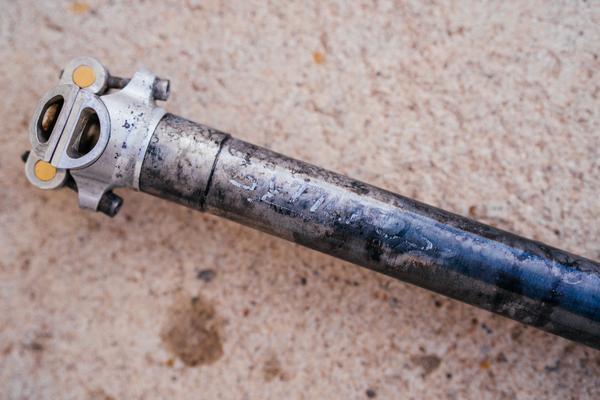Does Removing Anodizing Weaken Aluminum
Aluminum anodizing leads to the deposition of an oxide layer that protects the aluminum alloy from corrosion and wear and tear while improving its surface hardness.
There are many instances where the anodized aluminum layer needs to be removed, for example, to re-treat the alloy, restore the original part, or perform other processing. The question that now stands is, does the removal of aluminum weaken the alloy?
Yes, removing the anodized layer removes the added functionality. However, there are other things, and this article will introduce the process while fully answering the question.
Does Removing Anodizing Weaken Aluminium?
To answer the question better, you must understand the relationship between anodizing and aluminum. Aluminum anodising deposits a thin protective oxide layer on the part. Nevertheless, the base alloy still retains properties like tensile strength, malleability, and ductility.
When the anodized layer on aluminum parts is removed, the base metal should remain unchanged. However, stripping away the anodized layer will remove the added protection, and the method can also affect the base metal.
Therefore, the weakening is not structural in the traditional sense. Instead, it refers to the notion that you have removed the protection and exposed the part to harsher environmental conditions.
How to Remove Anodizing From Aluminum
Removing the anodized layer from an aluminum alloy can be done via chemical, mechanical, or electrochemical reduction. Each method is unique and can affect the aluminum’s surface properties differently. This means they have unique advantages and drawbacks, as explained below.
Chemical Stripping
Chemical stripping involves using acidic or basic solutions to dissolve the oxide coating. The two primary chemical solutions used for this purpose are phosphoric acid and caustic soda (sodium hydroxide), and each affects the base metal differently.
Phosphoric acid dissolves the aluminum oxide (Al₂O₃), breaking down the anodic layer for easy removal. It is gentler than caustic soda but less effective than caustic soda, which can attack the base aluminum alloy if left too long.
Both techniques leave surface marks or etching on the aluminum alloy to a certain degree, affecting the part’s aesthetic properties. However, under careful control, the part’s structural integrity is not impacted.
Advantages of Phosphoric Acid Technique
- Phosphoric acid is less aggressive toward the base aluminum alloy.
- It is suitable for precision applications where damage to the aluminum surface is undesirable.
- It avoids scratching or pitting the surface like mechanical methods.
Disadvantages of Phosphoric Acid Technique
- Phosphoric acid takes longer to dissolve the anodized layer
- Requires proper handling due to the hazardous nature of acids
- It may not be practical for some aluminum parts due to cost and time
Advantages of Caustic Soda Technique
- Sodium hydroxide is fast and cost-effective
- The process does not require specialized equipment and can be done with simple immersion tanks.
Disadvantages of Caustic Soda Technique
- Sodium hydroxide is aggressive and can attack the base aluminum metal
- It requires precise timing and skills to prevent damage to the base metal
- Sodium hydroxide is highly corrosive
Mechanical Methods
Mechanical methods involve scraping away the oxide layer using processes like sanding, abrasive blasting, and polishing. Sanding is a labor-intensive process that uses fine-grit sandpaper to remove the anodized coating. It has precise control over the material removal rate, making it more suitable for small-scale removal. If done correctly, it can avoid scratches or inconsistencies in the finish.
Bead blasting or sandblasting involves shooting a high-pressure stream of abrasive particles, such as glass beads, alumina, or sand, at the anodized surface to strip away the oxide layer. This technique is faster than sanding, making it suitable for larger surfaces. However, it can also lead to surface warping or pitting when not correctly done.
Mechanical methods do not chemically alter aluminum but can roughen or damage the surface if applied too aggressively. They are less precise than chemical methods and can leave physical imperfections. Hence, they are problematic for parts that require aesthetically acceptable tolerances.
Advantages of Sanding Technique
- It aids in the careful and targeted removal of the anodized layer
- It is cheap and readily available.
- It generates no hazardous waste.
Disadvantages of Sanding Technique
- The process is time-consuming, especially for large surfaces or complex parts.
- The techniques can lead to uneven removal, scratches, or grooves if not done correctly.
Advantages of Blasting Technique
- The blasting technique is very fast.
- Blasting can result in a consistent, even surface finish
- Depending on the desired finish, various abrasive materials (glass beads, alumina, etc.) can be used.
Disadvantages of Blasting Technique
- Excessive blasting pressure or improper technique can cause pitting, warping, or distortion of the aluminum surface.
- Sandblasting requires access to blasting equipment and facilities, increasing setup costs.
- The process generates significant amounts of dust, requiring extensive cleanup and the use of PPE to prevent inhalation hazards.
Electrochemical Reduction
Electrochemical reduction is more controlled and precise when removing anodized aluminum parts. It is a reversal process that involves placing the aluminum in a bath with an electrolyte solution (sodium hydroxide or sulfuric acid) and applying an electric current.
The oxide layer is stripped away as the material undergoes a reverse reaction to anodizing. This process allows for more uniform removal of the anodized layer and can be fine-tuned to control the depth of oxide removal.
Electrochemical reduction has the least damaging effect on the base aluminum. However, it requires specialized equipment and is more time-consuming and expensive than chemical or mechanical techniques.
Advantages
- The electrochemical process allows for uniform removal of the anodized layer with minimal risk to the base aluminum alloy.
- This process doesn’t involve abrasion or aggressive chemicals; hence, it is less likely to cause pitting or surface roughness.
- It is suitable for sensitive or high-value components where surface integrity is critical.
Disadvantages
- Electrochemical reduction takes more time compared to other methods, making it less suitable for high-volume or large-scale applications.
- The process requires specific electrolyte baths and power supplies, making it costlier and less accessible for small-scale operations.
- Running the necessary equipment for electrochemical reduction can consume significant amounts of energy, increasing operational costs.
Removing Anodizing From Aluminum Parts: Weaken or Not?
Whether removing anodizing weakens aluminum depends on understanding what “weaken” means in this context. After removing the anodized layer, the structural integrity of the base aluminum remains intact. In short, the base metal’s mechanical properties, like tensile strength, yield strength, and fatigue resistance, are unchanged.
What is compromised, however, are the surface properties that anodizing improves. The anodised aluminum becomes more vulnerable to corrosion, as the anodized layer provides a barrier against environmental factors like moisture, salt, and chemicals.
Over time, especially in harsh conditions, unprotected aluminum can rust, leading to pitting, surface degradation, and eventual functional weakness of the material.
Removing the anodized layer also decreases surface hardness, making the aluminum more prone to scratches, dents, and wear. In high-wear applications, such as automotive parts or industrial machinery, the absence of anodizing can significantly reduce the part’s lifespan and increase maintenance needs.







